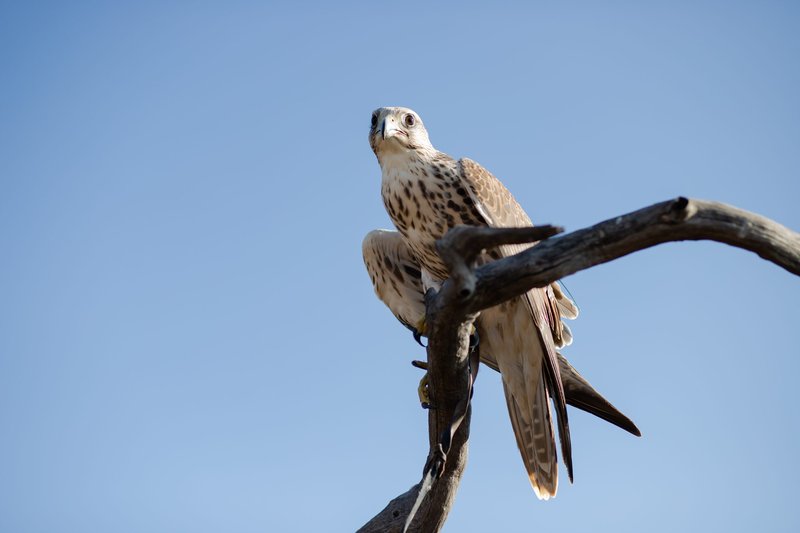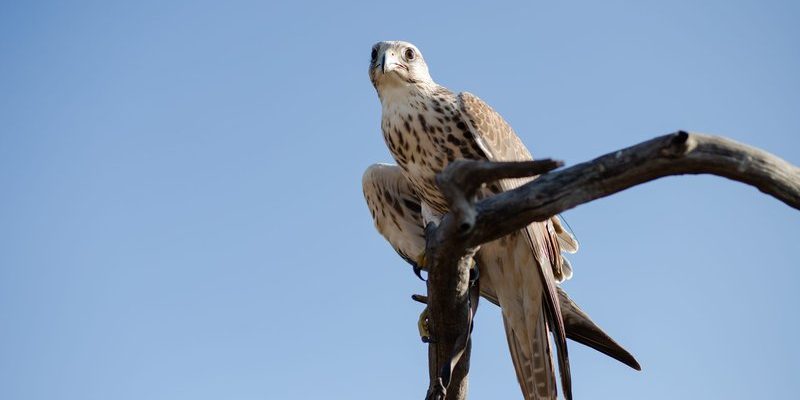
The Saker Falcon, known scientifically as *Falco cherrug*, is mainly found in parts of Europe, Asia, and the Middle East. They’re often spotted nesting on cliffs or in trees, and they display a stunning range of colors—from rich browns to light grays. But much like the delicate ecosystems they inhabit, their status is complex and worth understanding. Let’s take a closer look at their situation and what it means for conservation efforts.
What Is The Current Status of the Saker Falcon?
You might be wondering what the official classification of the Saker Falcon is. As of now, the International Union for Conservation of Nature (IUCN) lists the Saker Falcon as vulnerable. This means they are at risk of becoming endangered if the factors threatening them persist. More specifically, the IUCN cites habitat loss, hunting, and poaching as major contributors to their decline.
Let’s break this down. The Saker Falcon depends on wide-open spaces for hunting—think grasslands and marshes. However, as urban development continues to expand, these habitats shrink. Imagine if suddenly your favorite park became a shopping mall; you’d be worried about where to play, right? This is similar to what the Saker Falcon faces.
In addition to losing their natural homes, these birds are often caught in the crossfire of illegal hunting. Despite their majestic beauty, they can be targeted for their feathers or even captured for falconry.
Why Is Habitat Loss A Big Deal?
Habitat loss isn’t just a buzzword; it has real consequences for wildlife. For the Saker Falcon, losing their habitats means they have fewer places to find food and nest. These birds are solitary hunters, and they thrive in areas where they can easily spot their prey—like small mammals and birds. If they can’t find the right environment, they struggle to survive.
Let’s visualize it this way: imagine living in a huge, vibrant city that suddenly starts tearing down your favorite spots—cafes, parks, and community centers. You’d feel increasingly stressed and maybe even start to leave. The same principle applies to the Saker Falcon.
Moreover, habitat loss often brings about fragmentation. This means that the remaining patches of suitable environment are scattered and disconnected. Without proper corridors, young falcons may find it hard to migrate or locate mates, further hurting their chances of survival.
What Role Does Hunting Play in Their Endangerment?
Hunting plays a significant role in the plight of the Saker Falcon. While hunting has historically been a part of falconry—a practice of training birds for hunting—it can take a dark turn. In many regions, Saker Falcons are hunted for sport or captured for the falconry trade. This puts additional pressure on their already dwindling population.
Here’s the thing: while some hunters operate legally and ethically, the illegal trade is rampant. In some areas, it’s way too easy for poachers to snatch these birds away from their homes. A falcon that should be soaring in the wild might end up in a cage, far from its natural habitat.
This illegal activity not only threatens individual birds but can also disrupt entire populations. When the pressure increases and their numbers dwindle, it can take years for the population to recover.
What Are Conservation Efforts Doing?
Despite the challenges, there are dedicated organizations and initiatives working hard to support the Saker Falcon. Conservation programs focus on habitat restoration, anti-poaching measures, and awareness campaigns. They aim to educate local communities about the importance of protecting these birds.
One successful example is the collaboration between various governments and NGOs to create protected areas where Saker Falcons can thrive. These safe zones allow for natural ecosystems to flourish and help combat illegal hunting. It’s sort of like creating a safe haven where they can be free from threats while they nest and raise their young.
Moreover, local involvement plays a crucial role. When communities understand the ecological benefits of preserving the Saker Falcon, they are more likely to help protect them. Community-led initiatives can create a powerful shift toward conservation.
Are There Alternatives to Falconry?
Since falconry is a traditional practice in many cultures, it raises the question: are there alternatives to ensure that Saker Falcons aren’t unduly harmed? The answer is yes! Sustainable practices can allow people to participate in falconry without harming wild populations.
One approach is breeding programs that produce Saker Falcons in captivity for falconry. These controlled environments can provide birds that are already accustomed to human interaction, reducing the need to capture wild populations. It’s kind of like adopting a puppy from a shelter instead of buying one from a breeder.
Additionally, promoting eco-tourism can benefit both the Saker Falcon and local economies. Birdwatching tours that emphasize observing these majestic creatures in their natural habitat can generate funds for conservation. This helps create a win-win scenario: local communities gain income while protecting a vulnerable species.
What Can You Do To Help?
You don’t need to be a biologist to make a difference! There are simple actions you can take to support the Saker Falcon and similar wildlife.
- Educate Yourself: Understanding the issues surrounding wildlife conservation helps raise awareness.
- Support Conservation Organizations: Donations or volunteering time can impact projects focused on falcon conservation and habitat protection.
- Advocate: Use your voice! Share information about Saker Falcons on social media or local community events.
- Spread the Word: Talk to friends and family about the importance of protecting wildlife habitats and the Saker Falcon.
Even small actions can accumulate into significant change. By doing your part, you contribute to a broader movement that supports these incredible birds.
The Saker Falcon isn’t just a bird; it’s a part of a delicate ecosystem that needs our attention. Their status as vulnerable reflects the challenges they face—from habitat loss to hunting. But there’s room for hope. With continued conservation efforts, sustainable practices, and community involvement, we can help protect these magnificent birds.
Remember, every action counts. By staying informed and taking steps to support wildlife, we can create a positive impact. So the next time you look up and see a falcon soaring overhead, you’ll know a little more about its story and what it takes to keep it flying high.

